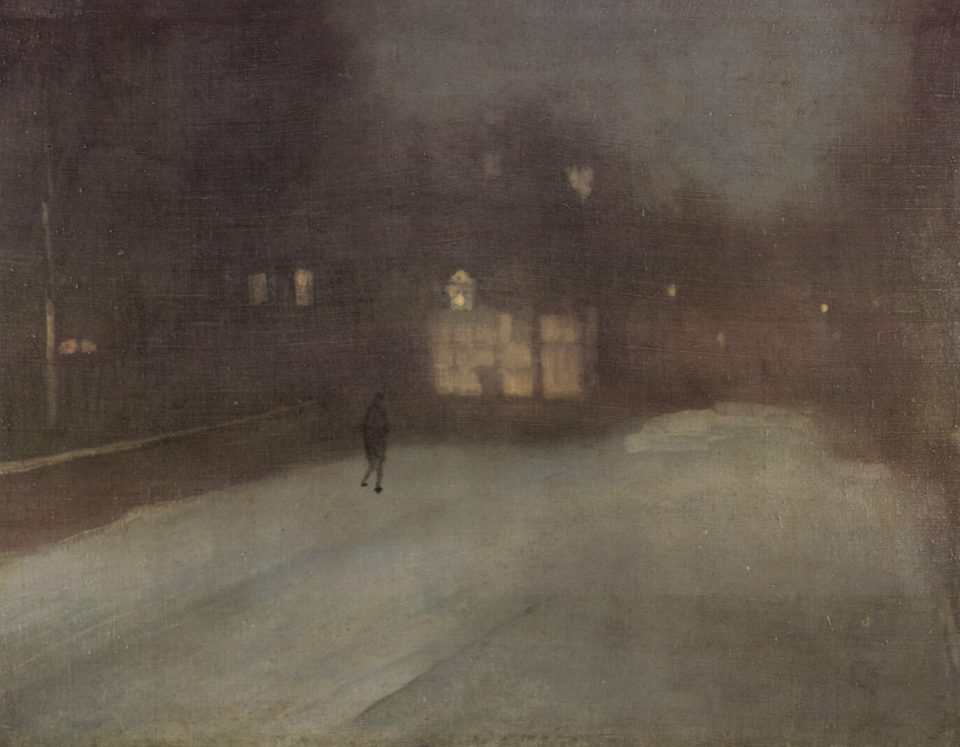James Abbott McNeill Whistler (1834-1903), born in America, was a moody child whose parents found that painting settled his temper and therefore encouraged his young talent. After his father died, his mother sent him to school in hopes of his training for a career in the church. But this was not to be, and he left school to attend a military academy. Here he was not a success either, being considered poorly disciplined, messy and insolent. He was eventually dismissed after which he took up painting.
Setting himself up in Paris, and then later in London, he enjoyed growing success and recognition as an innovative painter of landscapes, everyday scenes of life, and portraits. He did not believe in flattering his sitters however, and being painted by him was something of a trial as he worked very slowly and demanded lengthy modelling sessions from all his patrons. For these reasons he was not as popular a portraitist as he might have been. His most famous portrait is that of his mother, a monochromatic, deceptively simple and stylish composition that has been much parodied since its first appearance. Initially the painting enjoyed mixed reactions, because of its unsentimental approach during a Victorian age when sentiment and decorative clutter were the vogue.
Whistler was a self-publicist and said to be rather egotistical, but there is no doubt that he had a unique style that influenced many artists around him.
In this painting, Whistler uses his characteristic titling deriving from music. He was very interested in the parallels between music and art, and titled many of his works along these lines.

